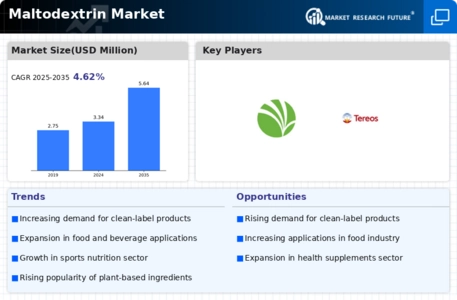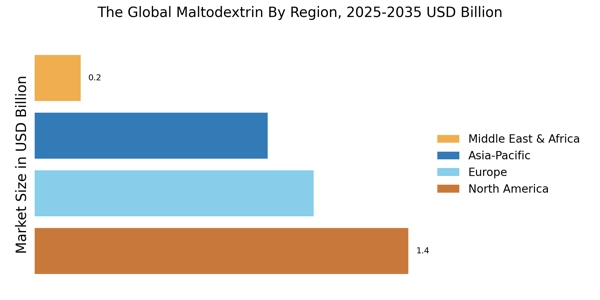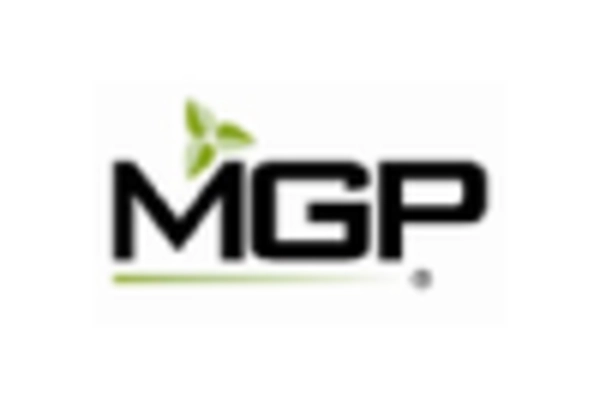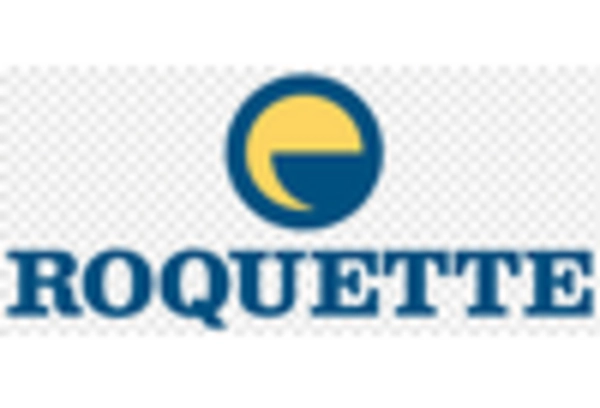Expansion of the Beverage Industry
The beverage industry is experiencing substantial growth, which serves as a significant driver for the maltodextrin market. With the rise in demand for functional beverages, including energy drinks and sports nutrition products, maltodextrin is increasingly utilized for its ability to provide a smooth mouthfeel and enhance flavor profiles. Market analysis suggests that the beverage sector is expected to expand at a rate of around 5% annually, creating a favorable environment for The Global Maltodextrin Industry. Additionally, maltodextrin's role as a carbohydrate source in these beverages aligns with consumer preferences for healthier options, further propelling its adoption. As manufacturers innovate and diversify their beverage offerings, the demand for maltodextrin is likely to continue its upward trajectory.
Growth in the Pharmaceutical Sector
The pharmaceutical industry is witnessing a surge in demand for excipients, with maltodextrin emerging as a preferred choice due to its favorable properties. As a filler and binder in tablet formulations, maltodextrin enhances the stability and bioavailability of active ingredients. The Global Maltodextrin Industry is poised to benefit from this trend, as the pharmaceutical sector is projected to grow at a compound annual growth rate of approximately 6% over the next few years. This growth is driven by an increasing focus on research and development, leading to the introduction of new drug formulations. Furthermore, the versatility of maltodextrin in various dosage forms, including powders and liquids, positions it as a critical component in the evolving pharmaceutical landscape.
Rising Demand for Convenience Foods
The increasing consumer preference for convenience foods is a notable driver in the maltodextrin market. As lifestyles become busier, there is a growing inclination towards ready-to-eat meals and snacks, which often incorporate maltodextrin as a thickening agent or stabilizer. This trend is reflected in market data, indicating that the convenience food sector is projected to grow at a compound annual growth rate of approximately 4.5% over the next five years. Consequently, The Global Maltodextrin Industry is likely to benefit from this shift, as manufacturers seek to enhance the texture and shelf-life of their products. The versatility of maltodextrin in various food applications, including sauces, dressings, and baked goods, further solidifies its role in meeting consumer demands for convenience.
Rising Health Consciousness Among Consumers
The growing awareness of health and wellness among consumers is significantly influencing the maltodextrin market. As individuals become more health-conscious, there is a marked shift towards products that offer functional benefits, such as low-calorie and low-sugar options. Maltodextrin Market, often perceived as a healthier alternative to sugar, is increasingly incorporated into food products aimed at health-conscious consumers. Market data indicates that the demand for low-calorie food products is expected to rise by approximately 7% annually, thereby positively impacting The Global Maltodextrin Industry. This trend is further supported by the increasing prevalence of lifestyle-related diseases, prompting consumers to seek healthier dietary choices. Consequently, maltodextrin's role in formulating health-oriented products is likely to expand.
Technological Innovations in Food Processing
Technological advancements in food processing are playing a pivotal role in shaping the maltodextrin market. Innovations in production techniques, such as spray drying and enzymatic hydrolysis, enhance the efficiency and quality of maltodextrin production. These advancements not only improve the cost-effectiveness of manufacturing but also ensure the consistent quality of maltodextrin, which is crucial for its application in various food products. The Global Maltodextrin Industry is expected to benefit from these technological improvements, as they enable manufacturers to meet the increasing demand for high-quality maltodextrin. Furthermore, the integration of automation and digital technologies in production processes is likely to streamline operations, reduce waste, and enhance overall productivity, thereby fostering growth in the maltodextrin market.


















Leave a Comment